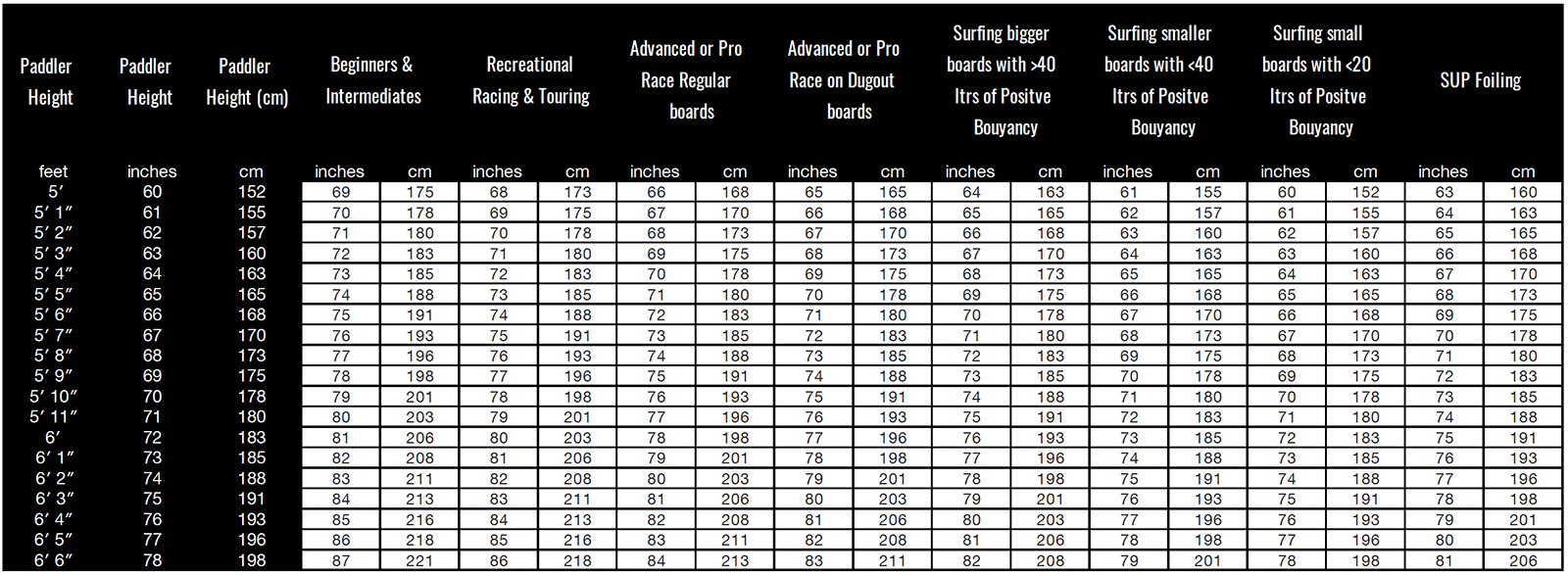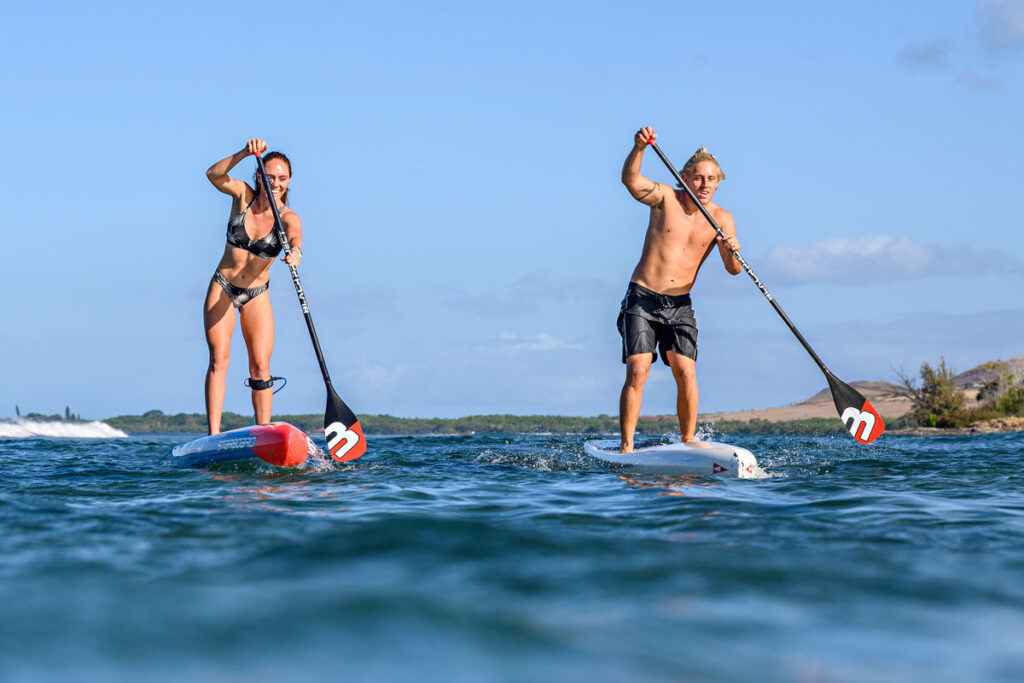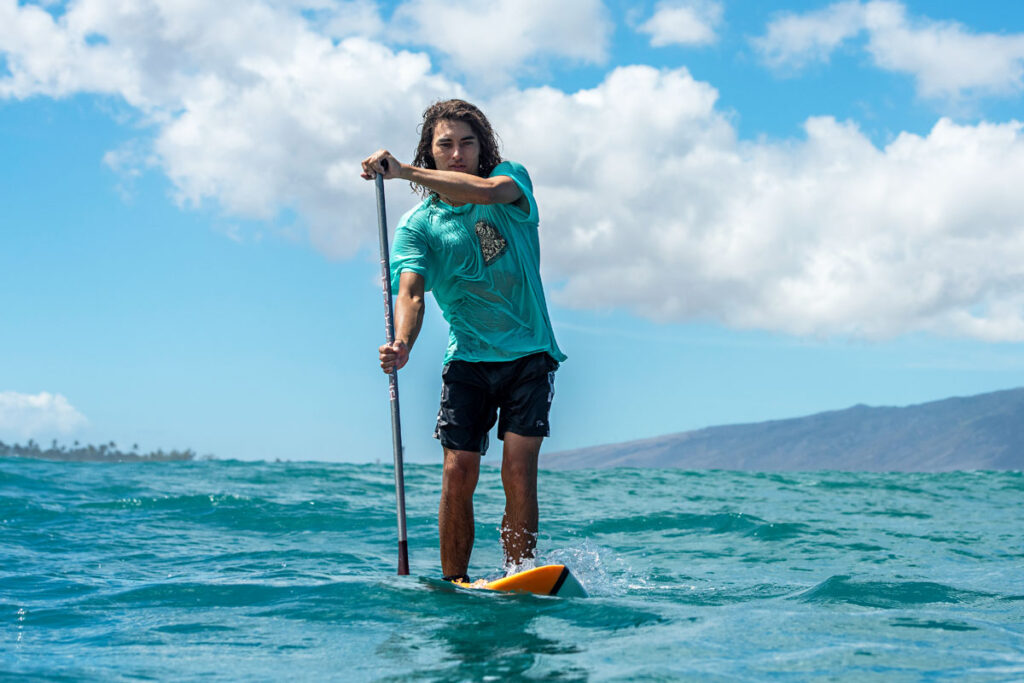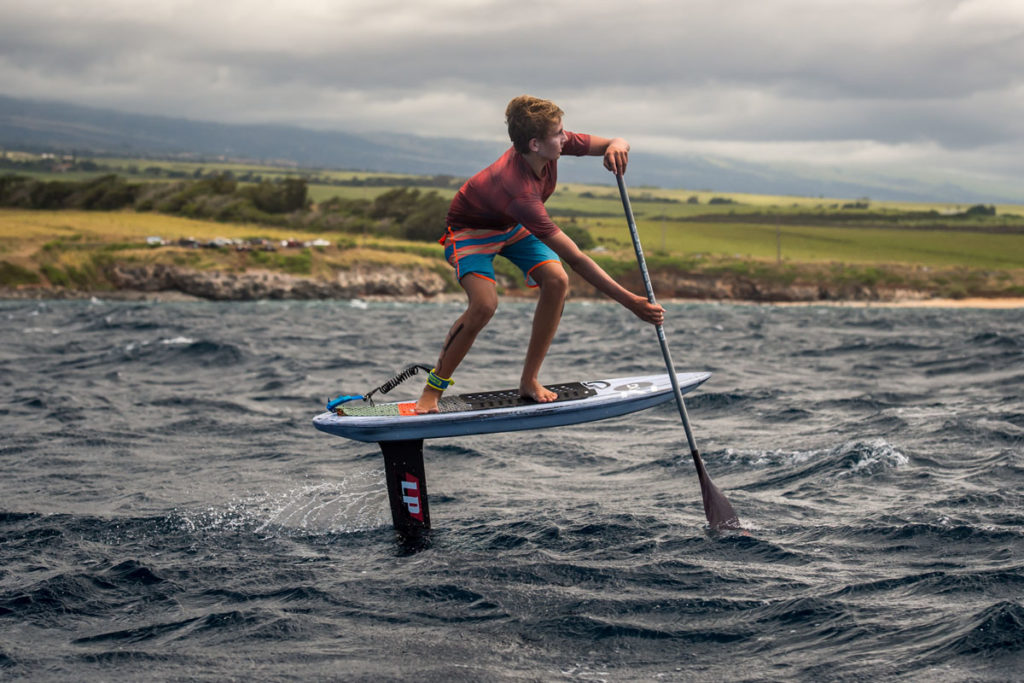What Length Should My SUP Paddle Be?
STEP #5:
THE CORRECT SUP PADDLE LENGTH
THE SUP PADDLE LENGTH GUIDE
WHAT LENGTH SHOULD ME SUP PADDLE BE?

HOW DO DIFFERENT SUP DISCIPLINES AFFECT PADDLE LENGTH CHOICE?
RECREATIONAL PADDLING & INFLATABLE ISUP BOARDS

If an iSUP (inflatable standup paddle board) is your paddle craft of choice, you’ll want to opt for a longer shaft. Due to the extra thickness and volume of iSUPs, having a longer paddle will enable you to stand more upright in a relaxed stance and lower the cadence of your stroke.
RECREATIONAL RACING & TOURING

ADVANCED & PROFESSIONAL RACING

DUGOUT BOARDS

SUP SURF BOARD VOLUME & RESERVE BUOYANCY

BOARD VOLUME IN LITERS
MINIUS (-)
PADDLER WEIGHT IN KILOGRAMS
EQUALS (=)
RESERVE BUOYANCY
If your reserve buoyancy is ≥40 your board is highly buoyant and you will want a longer paddle.
If you answer is less than <40, your board size is smaller (you’re closer to the water) and you will want a slightly shorter paddle.
If you answer is ≤20, as it is in the case of many performance SUP surfboards, then your board is getting extremely small and you will want a considerably shorter paddle, which also helps when aggressive surfing.
If your answer is ≤10, your board is very small and you will likely want a paddle that’s shorter than your height.
SUP FOILING

HOW TO CORRECTLY MEASURE THE LENGTH OF YOUR SUP PADDLE
This one of the most asked questions we get from paddlers when choosing their new standup paddle. The key is to measure along the front of your SUP paddle, from the tip of the blade to the top of the handle.
Important note: If you are upgrading from an adjustable paddle, do not assume that the markings on your paddle are accurate, always measure.
If you have any questions please do not hesitate to ask for assistance either via the chat option or via our contact page.
WHEN & HOW TO SHORTEN YOUR SUP PADDLE
HOW DO I KNOW IF MY PADDLE IS TOO LONG?
If you paddle is too long you may notice some or all of these symptoms:
- Pain in shoulders
- Awkward feel when paddling
- Hard to make paddle swaps
- Over-extension in power phase of stroke
HOW DO I KNOW IF MY PADDLE IS TOO SHORT?
If you paddle is too short you may notice some or all of these symptoms:
- Lower back pain
- Loss of power on strokes
- Blade not fully submerged during stroke
- Loss of stability










